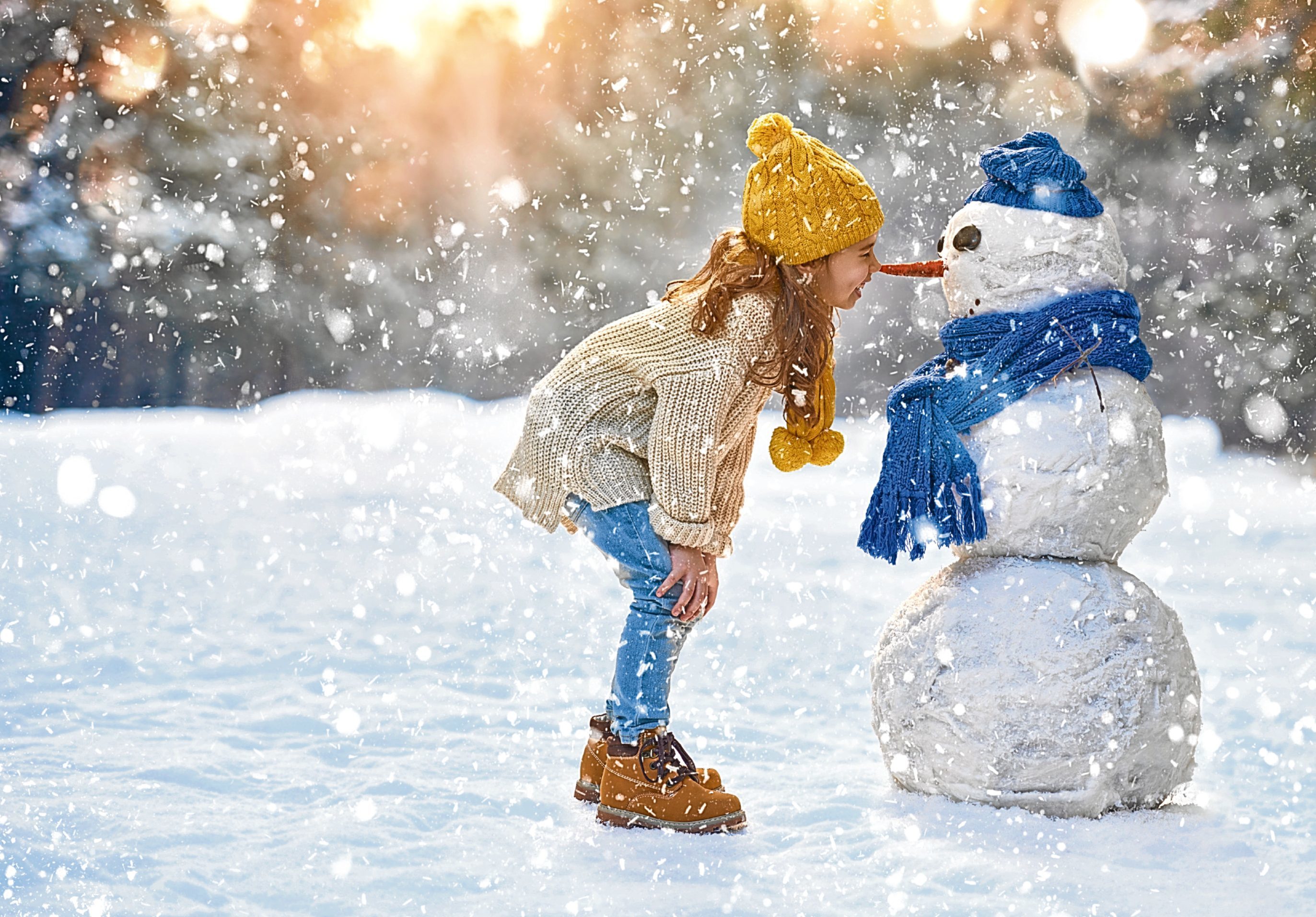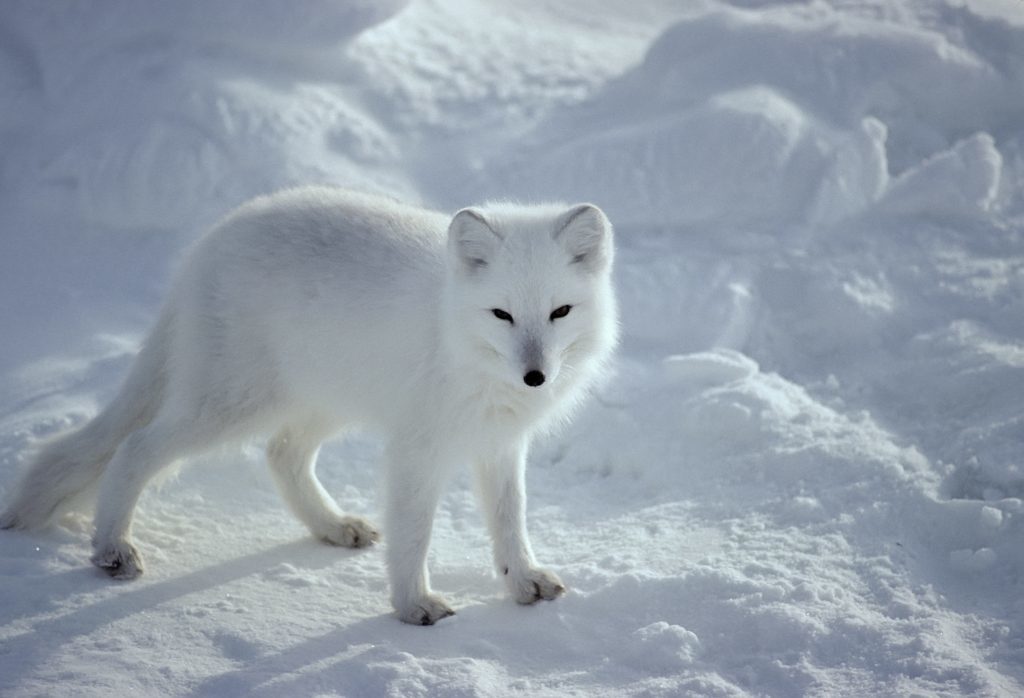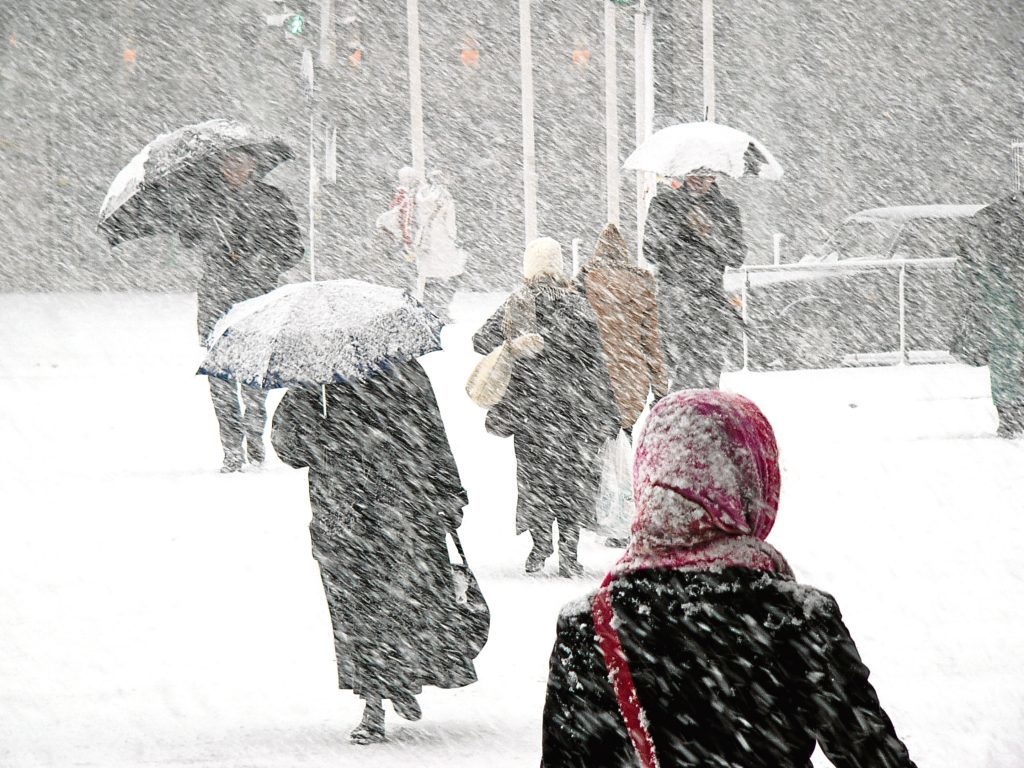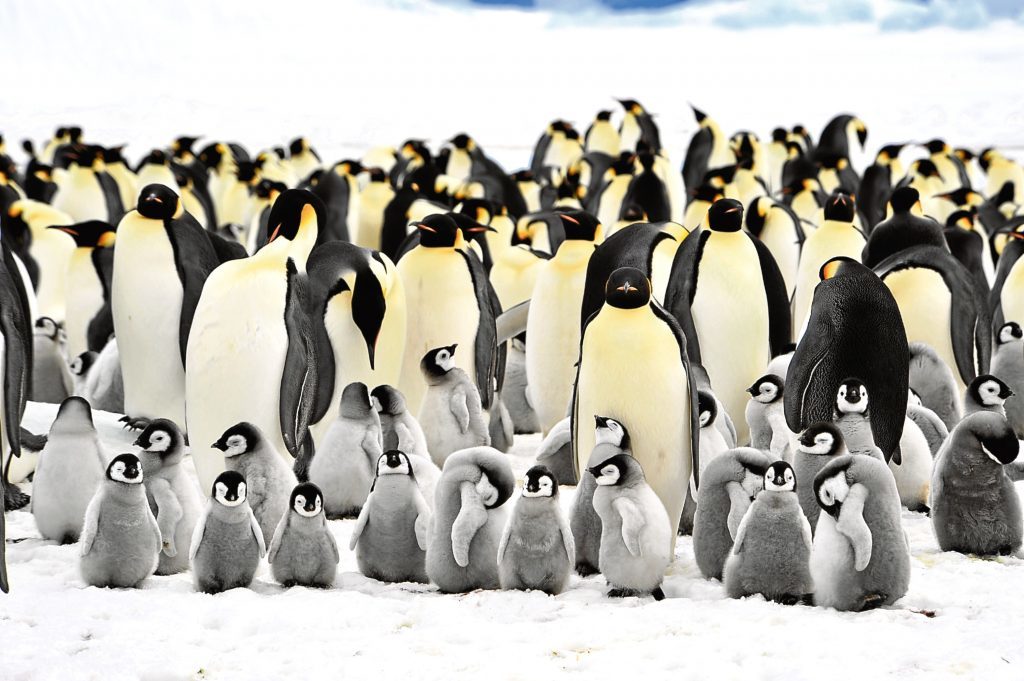
IT makes winter magical, but how much do you really know about those chilly flakes?
In the city of Yakutsk, November in 2007 is remembered fondly because the temperature didn’t go below -25°C.
This snow-covered city of 200,000 people, in a remote part of Eastern Siberia, is the world’s coldest.
In January, highs of -40°C are regarded as normal and if the mercury reads -50°C, you might be justified in saying it’s a bit nippy.
So remember the people of Yakutsk as you clutch your cocoa mug with your woolly mittens this winter because even when our snowfall is heavy, it’s still fairly house-trained compared to other parts of the world.
The white stuff
In the depth of winter, you might look out with a sinking heart and think you will have to struggle to work through a blizzard. You might think that, but it’s not true — because it’s probably not a blizzard and it isn’t white.
Snowflakes are actually translucent. They look white only because of the way the light spectrum deflects off the many angles of the crystals. When a lot of snowflakes have a group hug, we get the wonderful, crisp white covering that looks so beautiful.
To be classed as a blizzard, it must be snowing in a wind strength of over 35mph and keep it up for more than three hours.
And even then, if visibility is more than a quarter of a mile — sorry, it’s still not a blizzard, it’s just a wimpy snowstorm.
Weird substance
Did I say snow looks white? Well, most of the time. Apparently grey, orange, red, yellow and even purple snow has been spotted!
In highly-industrial areas of the world snow can pick up soot and other pollutants in the air on the way down and it loses that lovely gleaming white appearance.
In February, 2007, red, yellow and orange snow fell in Siberia. This was probably caused by a sandstorm in a neighbouring country, and the sand and dust adhered to the flakes as they fell.
In Canada’s Prince Edward Island, the soil is a red colour and when this is blown upwards as dust it colours the snow, making for very unusual snowballs.
Some snow with a yellow hue is coloured by heavy metallic residue in the air. This happened in Bulgaria and Romania in March 2010. That stuff was toxic and definitely not for eating!
Purple snow can contain Saharan sand that has been blown high into the atmosphere and propelled to colder regions.
When it’s sleet
So if it’s very cold and stuff is falling from the sky, why isn’t it always snow? Sometimes it’s sleet or hail.
Sleet is a winter precipitation that has fallen as snow, but has passed through a warmer layer of air on the way down. As a result, it begins to melt but hasn’t completely melted before it hits the ground. It is wet, slippery and unloved.
Hail is different and makes itself heard on rooftops and hops about on the footpath like popping corn. These are ice particles that have been moving about within thunder clouds, carried on updrafts.
As they move they get bigger, gathering more ice on their surface. When they get too big to be held in the updrafts, down they fall, so fast that they don’t have time to melt.
Hailstones can fall at any time of the year and they can cause damage. The biggest hailstone ever recorded fell in South Dakota in 2010. It was 20cm in diameter and weighed just under a kilo!
A set of whiskers!
Snow and ice are important caretakers of fresh water. It is reckoned that 80% of the world’s supply of fresh water is in frozen form, and covers 12% of the world’s surface.
Snowfall varies considerably depending on where you are. Anyone aged 60 or over in the British Isles will probably remember the Big Freeze of the winter of 1962–63. Temperatures reached -19°C in Sutherland.
It snowed heavily intermittently from Boxing Day 1962 until March 1963. Even the sea froze at Herne Bay in Kent. During those months there were blizzards — real ones — and in Kent some snowdrifts were over four metres deep.
One man remembers having to rescue his traumatised cat, which had decided that jumping out the window onto this nice soft white blanket would be a good idea.
Three feet down and with snow on its whiskers, it was wishing it had stayed by the fire.
Frosty fun
Snowball fights are popular with children and adults alike, and if you could shove snow down the neck of the school bully you could name your own chocolate bar at the tuck shop.
Hostilities in the largest snowball fight ever took place in Seattle in January 2013 when 5,834 people took aim. It was organised to raise money for a children’s charity.
Snowmen also pop up all over the place, and making snow angels has gained popularity.
For this, you need to lie flat on your back and fan out your arms and legs to imprint the shape of an angel in the snow. North Dakota holds the record for making the most snow angels. To raise money to provide clean drinking water in Ethiopia, 8,962 people lay down in the snow.
In pictures: Snow comes to Scotland – click here to read more
Get sporty
Snow, and plenty of it, is essential for the more serious side of winter fun. The thrill of hurtling down the Alpine slopes on a smooth pair of skis is the ultimate high for many holidaymakers.
The Cairngorms provide one of the best ski runs in Britain, and there are now some dry indoor ski runs to practise on — but that’s cheating!
At the Winter Olympics, the competitive spirit of many nations comes together in a feast of exciting sporting events that depend on snow or ice, including skiing, ice skating and the thrilling bobsleigh races.
Like the Summer Olympics, they are held every four years but in a different cycle, so that they leapfrog every two years.
The next Winter Olympics will be held in 2018 in South Korea. The Southern hemisphere doesn’t get much of a chance to host the Winter Olympics for the simple reason that they’re having their summer at the time!
White wildlife
Many animals live in icy conditions. In order to survive they must develop ways to cope with the intense cold.
In the Arctic, the polar bear has two thick layers of fur to keep itself warm.
Its body is a normal mammal temperature of around 37°C, but in the Arctic winter, temperatures can reach as low as -50°C. If necessary, the bear digs a hole in the snow and curls into a tight ball with its paws tucked over its warm nose.
Polar bears have webbed feet and large thick claws to help them dig in the snow, and they’ve even got fur on the soles of their paws — grow-your-own furry slippers!
At the other end of the world, penguins, especially Emperor penguins, have drawn the short straw in the location stakes. They have two layers of thick feathers and stock up on lots of food to give themselves chunky fat layers. They are also great group huggers, shuffling up together into a huge mass of penguin bodies.
The fur of other animals, such as the Arctic fox and the ermine, change colour as winter approaches so that they become a pure white — perfect camouflage for both protection and hunting.
Feels like home
Animals aren’t the only ones who have to cope with snow. Many people encounter it more frequently and severely than we do.
There is a popular myth that Eskimo languages have a hundred words for snow.
While not strictly true, the Met Office website reports: “The dialect spoken in Nunavik, Canada . . . has at least 53 separate words including ‘pukak’ to refer to crystal-like snow that looks like salt, ‘matsaaruti’ meaning wet snow to ice a sleigh’s runners, and ‘qanik’ to refer to falling snow.”
Eskimos also discovered what the polar bears already knew: compacted snow makes great insulation. It can be nearly 38°C inside an occupied igloo!
Anyone who’s seen Doctor Zhivago will know that life goes on in countries like Russia no matter how high the snow climbs. We tend to stock up for Armageddon if it gets higher than the dog’s ankles!
Play safe
We might not be facing the end of the world but there are some sensible precautions to take as the winter progresses and the chance of snow increases.
If you’re a driver, check the tread on your tyres. The AA recommends at least 3mm of tread to give a good grip on snow and compacted ice.
Always clear snow from the roof of the car before you drive off because, like water, snow is heavy and the weight could affect stability.
If you have to brake suddenly, the snow will slide down onto the windscreen and obscure your view.
And remember stopping distances. They can be as much as 10 times longer in ice and snow.
The AA also recommends an emergency kit to keep in the car in the winter, including a warm blanket, a shovel and some chocolate and drinks.
Without being paranoid, it is sensible to get in some food supplies — not forgetting some for the cat, the dog and the hamster!
Elderly folk may not have the resources or ability to stock up on food, so keep a canny eye out for them as well.
The NHS provides general advice on living in cold weather here.
More advice on driving in snow conditions can be found here.

Enjoy the convenience of having The Sunday Post delivered as a digital ePaper straight to your smartphone, tablet or computer.
Subscribe for only £5.49 a month and enjoy all the benefits of the printed paper as a digital replica.
Subscribe

